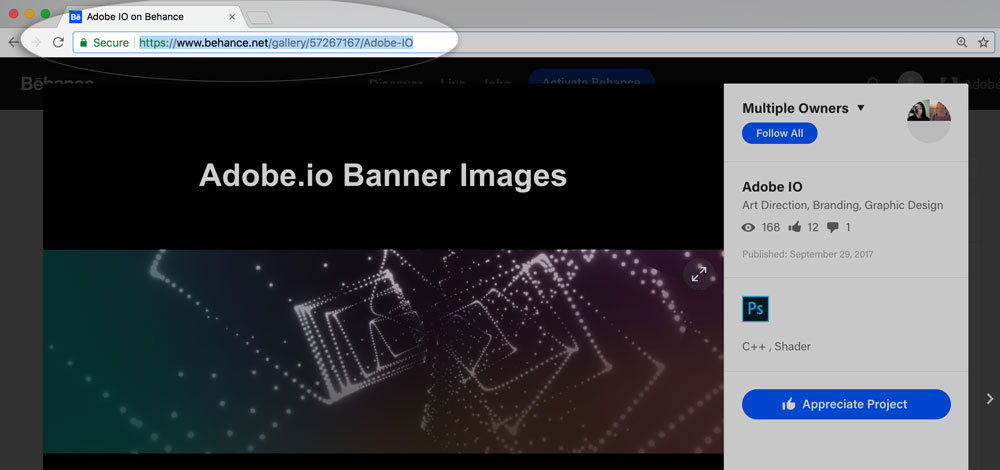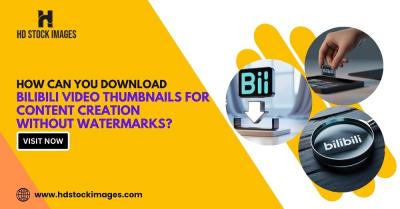Are you looking to enhance your Behance projects by adding valuable external resources? You've come to the right place! Linking to relevant websites, articles, or your own social media can bring your projects to life and engage your audience. In this post, we'll dive into the significance of linking and how to effectively incorporate links into your Behance projects. Let’s get started!
Understanding the Importance of Linking in Behance Projects

Linking in your Behance projects isn’t just a nifty trick—it’s a powerful tool for showcasing your work and expanding your professional network. Here’s why it matters:
- Enhances Project Context: By providing links to articles, design resources, or case studies, you give your viewers a deeper understanding of your work. Imagine showcasing a graphic design project and linking to the inspiration behind it. This not only enriches their experience but also highlights your thought process.
- Drives Traffic to Your Other Platforms: If you have a personal website, blog, or social media profiles, linking to them can encourage visitors to explore more of your work. Think about it: a viewer impressed by your Behance project might want to check out your Instagram for more behind-the-scenes content or visit your website for a comprehensive portfolio.
- Establishes Credibility: Providing links to reputable sources can bolster your credibility. For instance, if you referenced a certain methodology or design principle, linking to the original source shows that you’ve done your research and are knowledgeable about your field. This can make a lasting impression on potential clients or collaborators.
- Encourages Collaboration: By linking to other creatives’ work that inspired you or projects that relate to your own, you open the door to networking and collaboration. It’s a great way to acknowledge others in your field and foster a sense of community.
- Improves SEO: While Behance is a platform with its own SEO mechanisms, linking out to your content can boost your visibility online. When you link to your own well-optimized site or blog, it can help drive search traffic to your work from various sources.
In short, integrating links into your Behance projects is a strategic way to enhance the viewer's experience, promote your brand, and create meaningful connections. So, how do you do it? Stay tuned as we explore the practical steps to seamlessly add links to your projects!
Also Read This: How to Make a Good Behance Portfolio: Tips for Designing an Impressive Portfolio
3. Step-by-Step Guide to Adding Links in Behance
Adding links to your Behance projects can significantly enhance your audience's experience. Whether you want to direct them to your portfolio, social media, or external resources, the process is straightforward. Here’s a simple step-by-step guide to get you started:
- Log into Your Behance Account: First things first, head over to Behance.net and log into your account. If you don’t have one, creating an account is free and easy!
- Select Your Project: Navigate to your profile and find the project you wish to add links to. Click on it to open your project.
- Edit Project: In the upper right corner, click the “Edit” button. This will allow you to modify your project details.
- Add a Link: Scroll down to the section where you can add content. You’ll see an option for adding a "Link" or “Add a URL.” Click on it.
- Enter Your URL: A dialog box will pop up. Here, you can paste the URL of the external resource you want to link to. Make sure the link is correct!
- Customize Your Link Text: You can also customize the anchor text that will be displayed. Instead of showing the raw URL, consider using something descriptive like “Visit my website” or “Check out my other projects.”
- Preview Your Changes: Always preview your project to see how the link appears. This can help you catch any mistakes before publishing.
- Save Changes: Once you’re satisfied, hit the “Save” button to finalize your changes. Your links will now be live for viewers!
By following these simple steps, you can effectively add links to your Behance projects, providing your audience with easy access to additional content they may find interesting. Remember, your portfolio is a reflection of your creativity, so make sure to include links that enhance it!
Also Read This: How to Make a Portfolio in Behance
4. Best Practices for Linking External Resources
Linking external resources to your Behance projects can create a richer experience for your viewers. However, it's essential to do it thoughtfully. Here are some best practices to keep in mind:
- Be Relevant: Make sure the links you include are relevant to the project. If you’re showcasing a design, link to a case study or an article that provides additional context.
- Use Descriptive Text: Instead of using generic phrases like “click here,” use descriptive anchor text. For example, “Explore my design process” gives viewers a clear idea of what to expect when they click your link.
- Check Your Links: Regularly check your links to ensure they are still active and lead to the intended pages. Broken links can frustrate users and harm your credibility.
- Avoid Overloading: While it’s tempting to link to everything, too many links can overwhelm viewers. Choose a few key resources that provide the most value.
- Consider the User Experience: Think about how your links will affect the flow of your project. You want viewers to engage with your work, not be distracted by unrelated content.
By following these best practices, you can ensure that your external links enhance your Behance projects rather than detract from them. Always keep your audience’s experience in mind, and your links will serve their purpose effectively!
Also Read This: Embedding Your Prototype in Behance to Showcase Interactive Designs
5. Common Mistakes to Avoid When Adding Links
When you're in the creative flow, it's easy to overlook the finer details, especially when it comes to adding links to your Behance projects. Here are some common mistakes you'll want to steer clear of:
- Broken Links: Always double-check your links before publishing! A link that leads to a 404 error is a huge letdown for viewers. Take a moment to click through each link to ensure it directs to the intended resource.
- Overloading with Links: While it might be tempting to include every resource you've ever used, too many links can overwhelm your audience. Aim for quality over quantity—select the most relevant links that truly enhance your project.
- Neglecting the Anchor Text: Using vague phrases like "click here" doesn’t inform your audience about what they’re clicking on. Instead, use descriptive text that gives context, such as "Explore my design process on my blog."
- Ignoring Mobile Users: Ensure that the links are functional and easy to click on mobile devices. Test your project on different devices and screen sizes to guarantee a smooth user experience.
- Not Including Attribution: If you're linking to external resources or using someone else's work, proper attribution is a must. This not only respects the original creator but also builds trust with your audience.
By avoiding these common pitfalls, you can ensure that your links enhance your Behance projects rather than detract from them. Always remember, a well-curated set of links can make your project shine!
6. Enhancing Your Project with Embedded Links
Embedding links directly into your Behance projects can elevate your work from good to extraordinary. Here are some creative ways to enhance your projects:
- Interactive Elements: Consider embedding links within your images. For instance, if you have a graphic design piece, hyperlink a specific element that leads to a tutorial or case study related to that design.
- Video Integration: If you’ve created video content, embed links that lead to your YouTube channel or related video tutorials. This not only keeps viewers engaged but also encourages them to explore more of your work.
- Showcase Client Testimonials: When displaying client feedback, link directly to their websites or projects. This not only adds credibility to your testimonials but also allows potential clients to see your collaborations.
- Call-to-Action Buttons: Make use of bold call-to-action buttons that link to your portfolio, social media, or even a contact form. Phrases like "Hire Me" or "See More" can be impactful and guide viewers on the next steps.
- Linking to Related Projects: If you have multiple projects that are interconnected, link them together! This helps viewers navigate your work and discover the full spectrum of your creativity.
By embedding links thoughtfully, you create a richer experience for your audience. Each link should serve a purpose, guiding them deeper into your creative world and encouraging interaction. Remember, the more engaging your project, the more likely viewers will stay and explore!
 admin
admin








